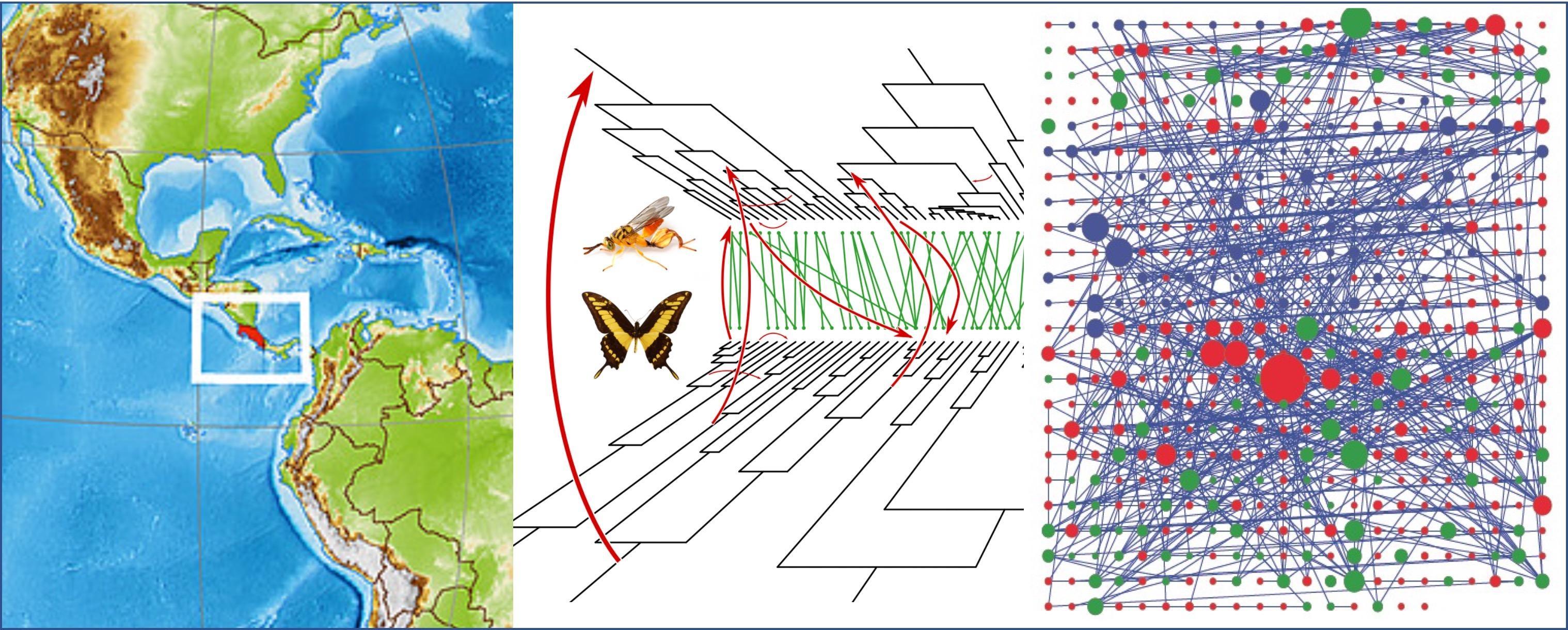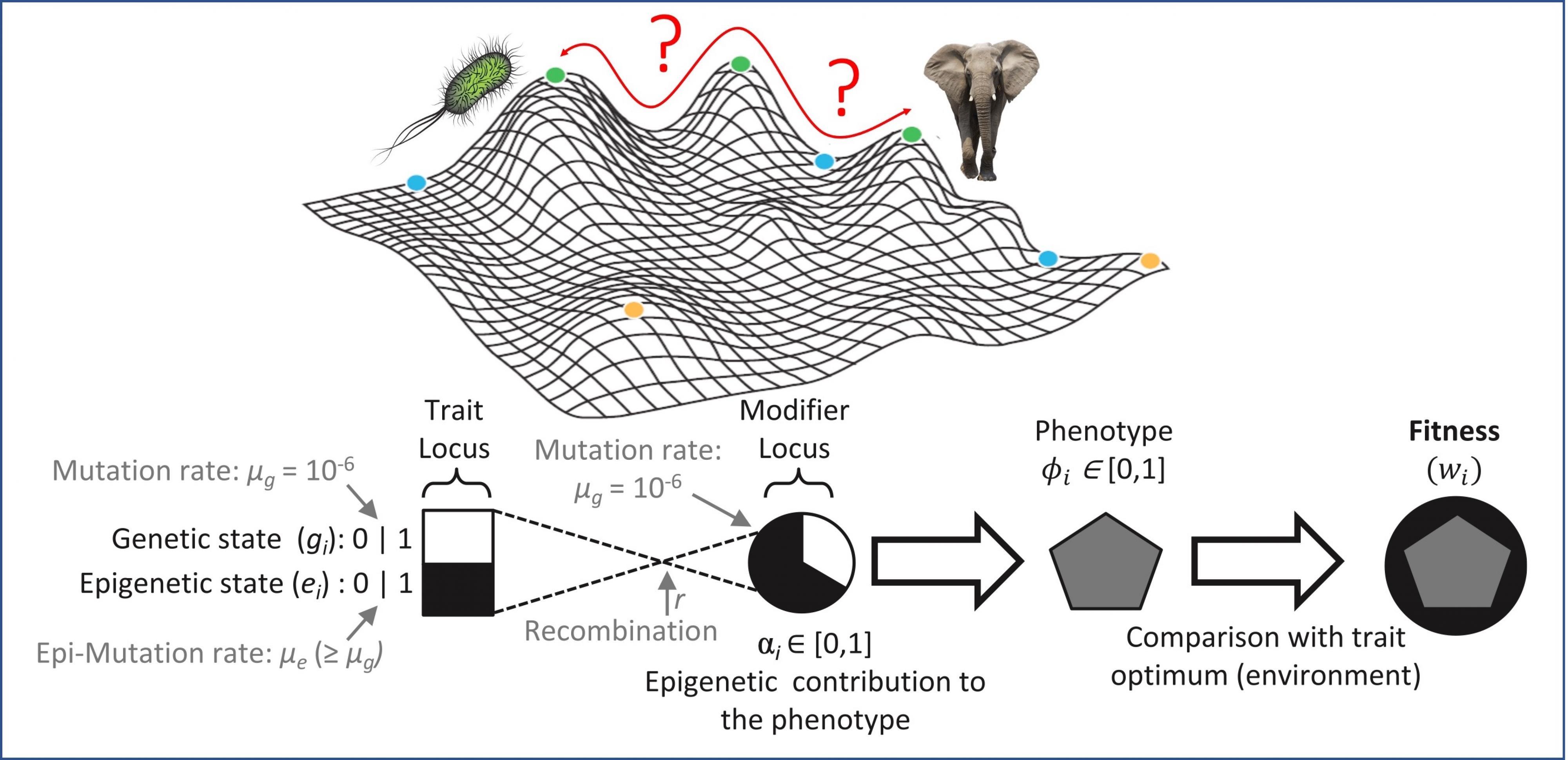
COEVOL Multi-Scale Coevolution
Evolutionary Genetics of Interactions Group
Charlat Sylvain
Chargé de recherche
CNRS
Who are I? Who am we?
These enigmatic questions, borrowed from my colleague and friend Fabrice Vavre, run through most of my work.
Who are I? Who am we?
These enigmatic questions, borrowed from my colleague and friend Fabrice Vavre, run through most of my work.
- Who are I? What multitude of genes, cells, symbiotic partners, compose biological "individuals"? And to what extent do these different degrees of organization also constitute individuals, i.e., effective targets of natural selection, carrying adaptations of their own, potentially deleterious at other scales?
- Who am we? To what extent should the collective, from the ant colony to the ecosystem, also be perceived as an incipient individual ?
As opportunities of collaborations arose, these questionings gave rise to various research projects that are briefly described below. Symbiotic relationships, approached in particular through evolutionary genomics in arthropods, occupy a prominent place, alongside modeling, didactics, and more recently, epistemology.
To discuss these topics, or to learn about possible opportunities to join us, please feel free to contact me.

AS IT COMES...
RESEARCH THEMES
We seek to test the hypothesis that parasitoids, particularly via domesticated viruses, would constitute preponderant vectors of horizontal transfers.

Of all symbiotic lineages of bacteria, Wolbachia is probably both the most abundant and the most diverse in terms of evolutionary implications. Its vertical maternal transmission has led it to evolve very particular invasion strategies, often beneficial to females (and more precisely, to the cytoplasmic lineage, transmitted by females) and on the contrary deleterious to males.
Wolbachia has always been central to our work, especially concerning its epidemiological dynamics and evolutionary consequences, at the scale of arthropod communities, and the genetic architecture of cytoplasmic incompatibility.

For more details:
- The paper of Beckmann et al, an analysis of different models of cytoplasmic incompatibility, and more recently, that of Namias et al
- The papers of Cariou et al (2017, 2020) on the consequences of Wolbachia on mitochondrial evolution
- The paper of Bailly-Bechet et al on Wolbachia acquisition / loss dynamics
As powerful as DNA variations may be in explaining evolution, what might be the contribution of other modes of inheritance to adaptive evolution ?

The teaching of evolutionary biology is reputed to be difficult. Beyond ideological reasons, this reveals how hard (but important) it is to deal with uncertainty in science teaching, and science in general.
For more details:
- Some papers (in French !) by Paulin et al (2018, 2019, 2020) sur ce sujet
- A short note (also in French !) published in the "café pédagogique"
If, in an evolutionary perspective, the individual is recursively conceived as resulting from the merging of individuals of lower scale, how did the smallest scale, the first, come to be?
What were the first units of selection, the first sparks of life? How to define and describe their properties, which necessarily implies combining biological and physico-chemical concepts? Where does individuality begin, and with it evolution by natural selection? In the uncertain hypothesis that such units of selection could exist outside the living world, in other physico-chemical systems, how to recognize them ?
Publications
Display of 1 to 30 publications on 80 in total
Phylogenetic relatedness rather than aquatic habitat fosters horizontal transfer of transposable elements in animals
Preprint
see the publicationThermodynamic consistency of autocatalytic cycles
Proceedings of the National Academy of Sciences of the United States of America . 122 ( 18 ) : e2421274122
Journal article
see the publicationEndoparasitoid lifestyle promotes endogenization and domestication of dsDNA viruses
eLife . 12 : e85993
DOI: 10.7554/eLife.85993
Journal article
see the publicationFrom Wolbachia genomics to phenotype: molecular models of cytoplasmic incompatibility must account for the multiplicity of compatibility types
Current Opinion in Insect Science . 49 : 78-84
Journal article
see the publicationNatural Selection beyond Life? A Workshop Report
Life . 11 ( 10 ) : 1051
DOI: 10.3390/life11101051
Journal article
see the publicationHow consistent is RAD‐seq divergence with DNA‐barcode based clustering in insects?
Molecular Ecology Resources . 20 ( 5 ) : 1294-1298
Journal article
see the publicationWolbachia host shifts: routes, mechanisms, constraints and evolutionary consequences
Biological Reviews .
DOI: 10.1111/brv.12663
Journal article
see the publicationL’épistémologie des sciences biologiques et géologiques : une occasion d’enseigner l’incertitude ?
Raisons éducatives . N°24
Journal article
see the publicationSome evolutionary insights into an accidental homing endonuclease passage from mitochondria to the nucleus
Peer Community In Evolutionary Biology . : 100101
Other publication
see the publicationL'enseignement de l'évolution : redonner une place à l'épistémologie des sciences historiques
RDST - Recherches en didactique des sciences et des technologies .
Journal article
see the publicationGlobal survey of mobile DNA horizontal transfer in arthropods reveals Lepidoptera as a prime hotspot
PLoS Genetics . 15 ( 2 ) : e1007965
Journal article
see the publicationCategorization of species as native or nonnative using DNA sequence signatures without a complete reference library
Ecological Applications . 29
DOI: 10.1002/eap.1914
Journal article
see the publicationThe Toxin–Antidote Model of Cytoplasmic Incompatibility: Genetics and Evolutionary Implications
Trends in Genetics . 35 ( 3 ) : 175-185
Journal article
see the publication(In)exhaustible Suppliers for Evolution? Epistatic Selection Tunes the Adaptive Potential of Nongenetic Inheritance
The American Naturalist . 194 ( 4 ) : 470-481
DOI: 10.1086/704772
Journal article
see the publicationCaution Does Not Preclude Predictive and Testable Models of Cytoplasmic Incompatibility: A Reply to Shropshire et al.
Trends in Genetics . 35 ( 6 ) : 399-400
Journal article
see the publicationWidespread Wolbachia infection in an insular radiation of damselflies (odonata, coenagrionidae)
Scientific Reports .
Journal article
see the publicationComparing 16S rDNA amplicon sequencing and hybridization capture for pea aphid microbiota diversity analysis
BMC Research Notes . 11 ( 1 ) : 461
Journal article
see the publicationFlower flies (Diptera, Syrphidae) of French Polynesia, with the description of two new species
European Journal of Taxonomy . ( 448 ) : 1-37
DOI: 10.5852/ejt.2018.448
Journal article
see the publicationBack and forth Wolbachia transfers reveal efficient strains to control spotted wing drosophila populations
Journal of Applied Ecology . 55 ( 5 ) : 2408-2418
Journal article
see the publicationLes sciences historiques : un impensé épistémologique dans l'enseignement de l'évolution
Recherches en éducation .
Journal article
see the publicationThe global impact of Wolbachia on mitochondrial diversity and evolution
Journal of Evolutionary Biology . 30 ( 12 ) : 2204-2210
DOI: 10.1111/jeb.13186
Journal article
see the publicationA newly evolved W(olbachia) sex chromosome in pillbug!
Peer Community In Evolutionary Biology .
Journal article
see the publicationA DNA barcode-based survey of terrestrial arthropods in the Society Islands of French Polynesia: host diversity within the SymbioCode Project
European Journal of Taxonomy . 272 : 1-13
DOI: 10.5852/ejt.2017.272
Journal article
see the publicationAdaptation-adaptabilité : comprendre la réponse adaptative avec pour objectif de la prédire
Prospectives de l’Institut Ecologie et environnement du CNRS : compte-rendu des journées des 22, 23 et 24 février 2017, CNRS, Bordeaux, CNRS . : 127-141
Book chapter
see the publicationHow Long Does Wolbachia Remain on Board?
Molecular Biology and Evolution . 34 ( 5 ) : 1183 - 1193
Journal article
see the publicationHow and how much does RAD-seq bias genetic diversity estimates?
BMC Evolutionary Biology . 16 : 240
Journal article
see the publicationThe Aculeata of French Polynesia. III. Sphecidae, with the record of three new species for the Society Islands (Hymenoptera)
Bulletin de la Société Entomologique de France . 120 ( 2 ) : 157-163
Journal article
see the publicationWolbachia Divergence and the Evolution of Cytoplasmic Incompatibility in Culex pipiens
PLoS ONE . 9 ( 1 ) : e87336
Journal article
see the publicationThe Evolution of Sex Ratio Distorter Suppression Affects a 25 cM Genomic Region in the Butterfly Hypolimnas bolina
PLoS Genetics . 10 ( 12 ) : e1004822
Journal article
see the publication